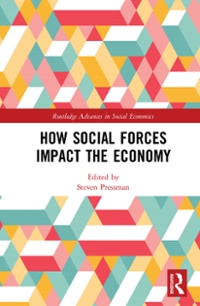Question
7. In the Mundell-Fleming model, the domestic interest rate is determined by the: A) intersection of the LM and IS curves. B) domestic rate of
7. In the Mundell-Fleming model, the domestic interest rate is determined by the: A) intersection of the LM and IS curves. B) domestic rate of inflation. C) world rate of inflation. D) world interest rate. 8. In the short-run model of a small open economy, net exports depend ______ on the exchange rate, where the exchange rate is defined as the amount of ______ currency per unit of ______ currency. A) negatively; foreign; domestic B) negatively; domestic; foreign C) positively; domestic; foreign D) positively; foreign; domestic 9. If short-run equilibrium in the Mundell-Fleming model is represented by a graph with Y along the horizontal axis and the nominal exchange rate along the vertical axis, then the IS* curve: A) slopes downward and to the right because the higher the exchange rate, the higher the level of net exports and, therefore, the higher the level of income that equilibrates the goods market. B) is vertical because there is only one investment level that is consistent with the world interest rate. C) is vertical because the exchange rate does not enter into the IS* equation. D) slopes downward and to the right because the higher the exchange rate, the lower the level of net exports, and therefore, the lower the level of income that equilibrates the goods market. 10. In a small open economy with a floating exchange rate, an effective policy to decrease equilibrium output is to: A) decrease government spending. B) decrease taxes. C) increase the money supply. D) decrease the money supply. 11. In a small open economy with a floating exchange rate, the nominal exchange rate will appreciate if A) the money supply is increased B) the government decreases tariffs on imports. C) taxes fall D) government spending falls; 12. In the Mundell-Fleming model of a small open economy with a floating exchange rate, a rise in government spending: A) partially crowds out private investment, so that there is a small increase in output. B) fully crowds out private investment so that output does not change. C) attracts foreign capital inflows, thus raising the exchange rate. As a result, net exports fall, but not by enough to offset the impact of the new government spending, so that there is a small increase in output. D) attracts foreign capital inflows, thus raising the exchange rate. As a result, net exports fall by an amount exactly equal to the increase in government spending so that output does not change.
Step by Step Solution
There are 3 Steps involved in it
Step: 1

Get Instant Access to Expert-Tailored Solutions
See step-by-step solutions with expert insights and AI powered tools for academic success
Step: 2

Step: 3

Ace Your Homework with AI
Get the answers you need in no time with our AI-driven, step-by-step assistance
Get Started


